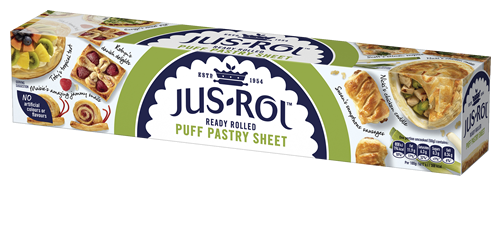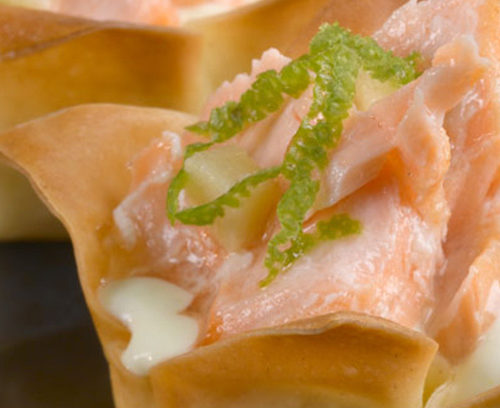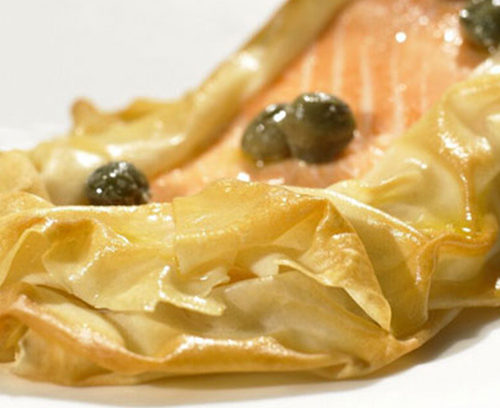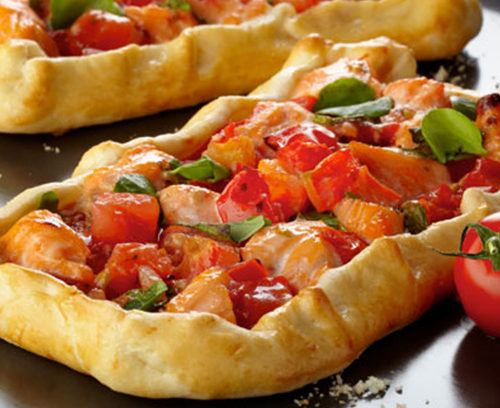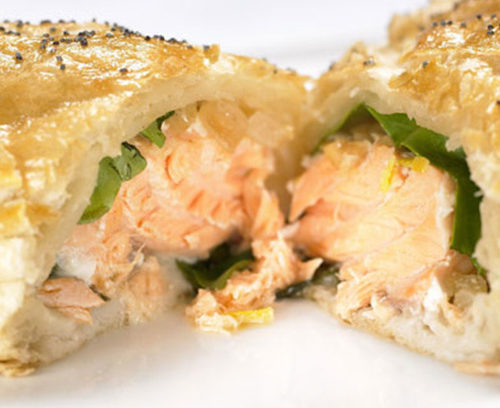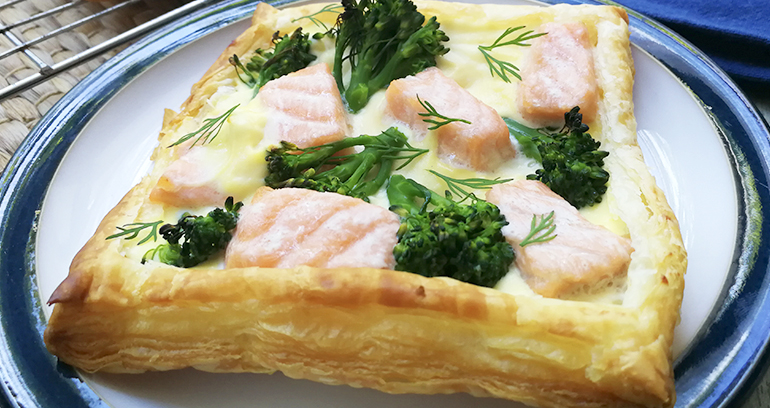
Salmon Surprise

Easy

6 Servings

30 minutes bake time
Fresh salmon on a crispy baked puff pastry sheet with aromatic dil, broccoli for added goodness. You can’t go wrong with this recipes!
Ingredients
- 1 x 320g Jus-Rol Puff Pastry Sheet
- 180g ricotta cheese
- 1 large free range egg, lightly beaten
- 1 lemon, zest
- 250g raw salmon fillets (skinless and boneless), cut into chunks
- 100g sprouting broccoli, trimmed
- Fresh dill, to decorate
- Salt and freshly ground black pepper
Method
- Preheat oven to 220°C / 200°C for fan assisted/ Gas 7
- Unroll the pastry, cut in half lengthways, cut each half into 3 and carefully place on a lined baking tray. Using a sharp knife, score a boarder around each piece of pastry, approximately 1cm wide, use a fork to prick the area inside the boarder.
- Bake in the oven for 10 minutes – if the middle of each tart has risen, simply press down with a palette knife, or similar.
- Meanwhile, place the trimmed broccoli into a pan of boiling water and cook for 3-4 minutes. Drain and refresh under plenty of cold water and set aside.
- Combine the ricotta, egg and zest in a bowl and season before dividing the mixture between the pastry cases. Divide the salmon and broccoli between the pastry cases and return to the oven for 15-20 minutes, until the salmon is cooked and the pastry is lightly golden and crisp.
- Garnish with fresh dill before serving.
Tips
- Take the pastry out of the fridge and remove from the packaging approximately 10 minutes before you are ready to use it, as it will be easier to work with.
- Delicious eaten hot, or cold!
- You can replace the broccoli with cherry tomatoes and garnish with fresh basil leaves for a colourful alternative!

